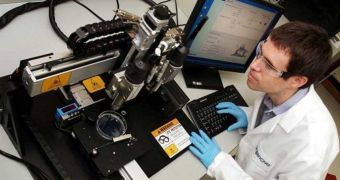Bioengineers working in the field of human-tissue repair and doctors trying to get better results with transplants will soon benefit from the advantages provided by the “world's first production model 3D bio-printer.” The new device was produced by Invetech, and the first one has already been delivered to Organovo. The latter is the owner of the proprietary NovoGen bioprinting technology, on which the innovation relies heavily, LiveScience reports.
“Scientists and engineers can use the 3D bio-printers to enable placing cells of almost any type into a desired pattern in 3D. Researchers can place liver cells on a preformed scaffold, support kidney cells with a co-printed scaffold, or form adjacent layers of epithelial and stromal soft tissue that grow into a mature tooth. Ultimately the idea would be for surgeons to have tissue on demand for various uses, and the best way to do that is get a number of bio-printers into the hands of researchers and give them the ability to make three dimensional tissues on demand,” Organovo CEO Keith Murphy says.
Institutions involved in biological-reconstruction research and in transplant technologies would be the main beneficiaries of the new instrument, Murphy reveals. The flexible platform could lead to a large number of innovations and breakthroughs, he adds, as it would provide research groups with unprecedented possibilities. “Building human organs cell-by-cell was considered science fiction not that long ago. Through this clever combination of technology and science we have helped Organovo develop an instrument that will improve people’s lives, making the regenerative medicine that Organovo provides accessible to people around the world,” Invetech President, Dr. Fred Davis says.
The printers are operated by an easy-to-use piece of software that allows experts to first model the architecture of the organ they are trying to build, before the special heads begin the actual, physical construction, one cell at a time. Science-fiction writers have been talking about this technology since the 1940s, but no one thought that, only 60 years later, it would become a reality. If such is the pace of progress, then there is no telling where we will be 60 years from now, experts believe.

 14 DAY TRIAL //
14 DAY TRIAL //